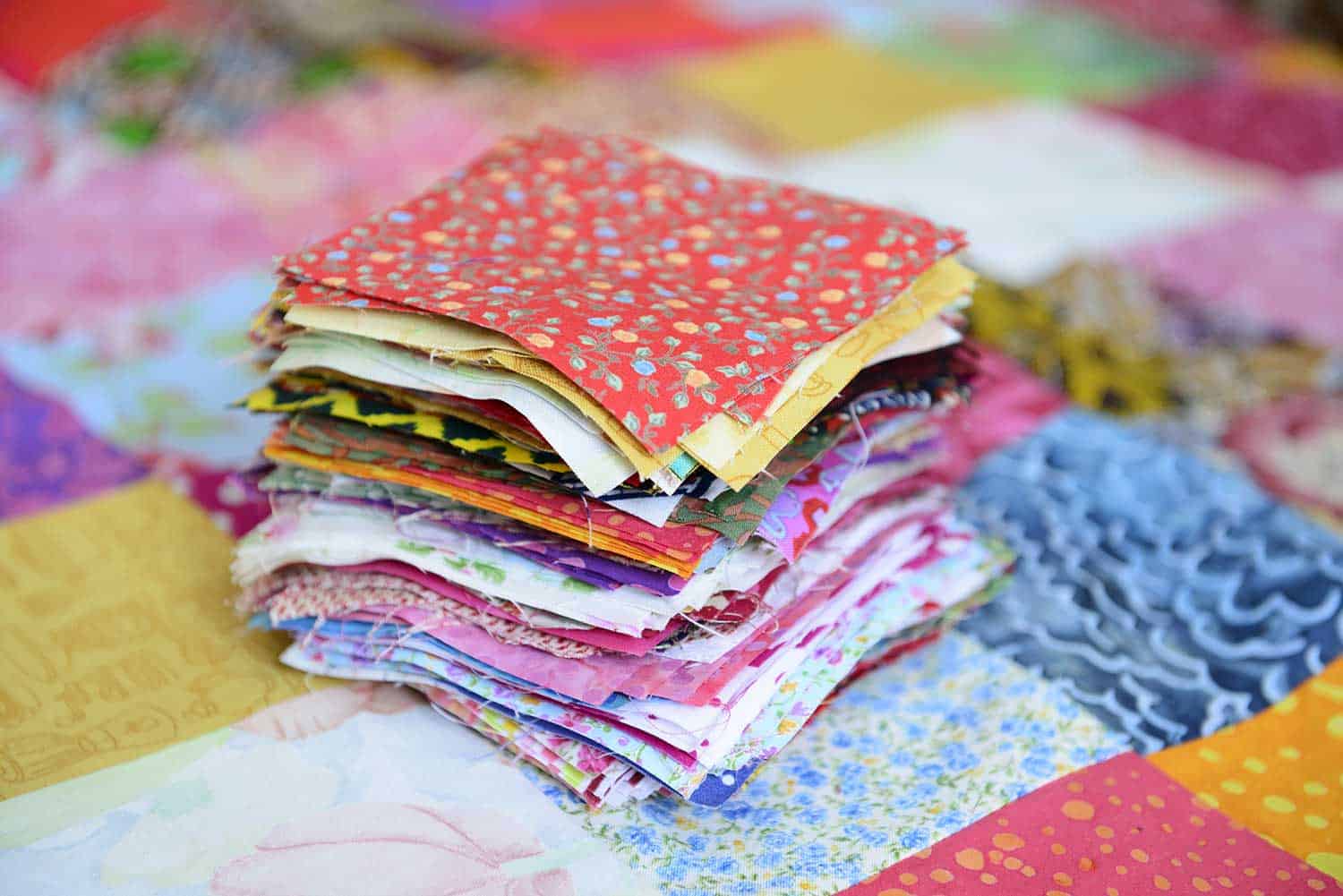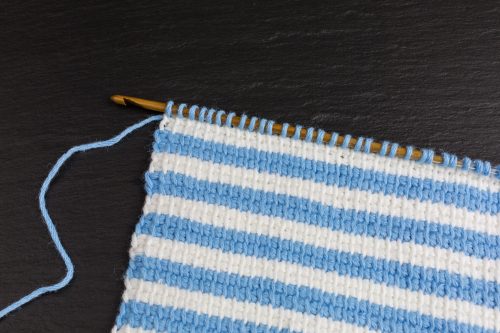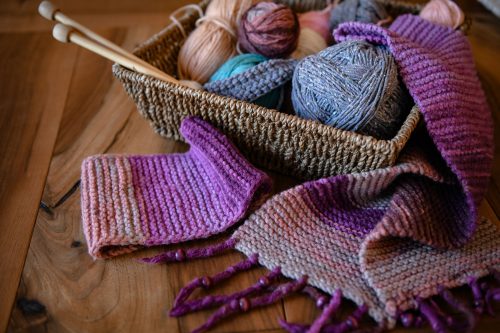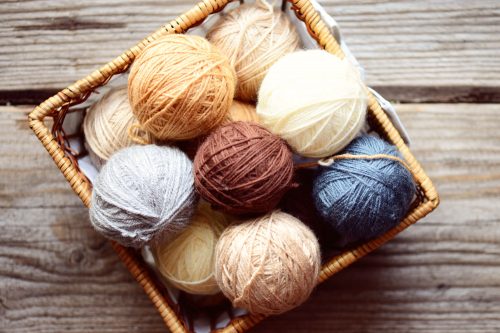There are so many beautiful and eye-catching quilt designs and techniques available. But, do you wonder what the best quality fabric to use is? Most sewing and craft enthusiasts swear by 100% cotton fabric but, there is a host of wonderful fabrics to make a long-lasting quilt. We researched the benefits and qualities of different types of choice fabrics. You will want to read on to learn more about how each fabric type best suits your quilt.
When you are inspired to make a quilt, you want to create your project with ideal fabrics for the task. Check out the following list of high-quality quilting fabrics.
- Quilter's weight cotton
- Cotton decorator fabric
- Essex Linen
- Flannel
- Voile
Discover touchably soft, durable fabrics that will help you create a quilt worth cozying under for years. As quilts can become prized heirloom possessions, whether store-bought or handmade, read on to learn more.

Comforting Quilting Fabrics

Quilting is a wonderful art form and craft that can be executed by hand or with a sewing machine's aid. Most quilters like to use 100% cotton fabric for topnotch results, but you can try your luck using blended fabrics or manmade fibers. Cotton fabric with a high thread count and substantial weight is an optimal choice when creating a quilt that will last for ages.
Before diving into a quilting project, you should be aware of quilting basics and the best types of fabrics to make a beautiful finished quilt. It is also helpful to prewash your fabrics before you measure, cut, and sew the pieces together. Manufacturers may leave behind chemicals to treat the fabric, or dyes can react to being washed or if there is a spill. When you make a quilt, you will need fabric to make the top layer, bottom layer, and batting layer to sandwich between the two quilt sections.
Quilter's Weight Cotton
Hands-down, quilter's weight cotton is the best choice for creating a delightful and memorable quilt. Most quilts designed using quilter's weight cotton can withstand the wear-and-tear of washing and keeping users warm for years. Choose a high-quality fabric from a trusted fabric store made from 100% cotton with a high thread count for the best results.
Check out this bundle of quilter's cotton on Amazon.
Check out this quality batting on Amazon.
How Do You Identify Quilting Cotton?
It is beneficial to identify the differences between quilting cotton and other cotton fabrics. Quilting cotton is often a medium to heavyweight, stiff, and doesn't drape well. Compared to cheaper, thinner cotton fabrics, quilting fabrics usually have less chemical residue, display less shrinkage, and bleed less than other fabrics. Unlike thinner cotton fabrics, quilting cotton has a heavier thread count and is designed to last a long time. Surprisingly, you can use quilting cotton to create apparel.
Cotton Decorator Fabric

Home decor fabric or cotton decorator fabric is made for upholstery, curtains, pillows, and other like-minded accessories and accents. However, a lightweight home decor fabric offers a plethora of designs, versatility and is optimal for a lightweight or midweight quilt. This type of fabric will often have a smooth, sateen finish and works well with fusible or lightweight batting. Have fun mixing and matching colors, textures, and patterns with this textile.
Check out this bundle of decorator fabric on Amazon.
Essex Linen
Essex Linen is an exquisite fabric line using a blend of 55% linen and 40% cotton. Many modern quilting enthusiasts enjoy using this type of fabric for quilt projects because of the results. Created by the Robert Kaufman Fabrics brand, Essex Linen has a delightful drape and softness for apparel, but it works well for quilts too. There are a few different styles of Essex Linen, each with their unique qualities and versatility.
- Yarn-Dyed Metallic - has fetching metallic elements of Lurex interwoven into the fabric.
- Homespun Essex - creates a unique box or window look because of the cross weave of white and colored fibers.
- Standard Essex - the fibers are dyed after they are woven.
- Yarn-Dyed Essex - a blend of pre-dyed fibers woven together with white threads
Remember, after choosing a fabric, test it out by pre-washing, starching, and ironing before cutting it for a project.
Check out this bundle of linen fabric on Amazon.
Flannel
There is nothing quite like the soft, touchable feel of warm flannel fabric. For a quilt, flannel can be used for piecing, but it is even better for a quilt's backing. Since flannel is delicate and stretchy, avoid ironing it too much but give it a light press instead when prepping the fabric. Flannel is a great choice for a baby quilt as it is easy to work with and durable.
When choosing flannel, do take care because it may be made of cotton, wool, or synthetic fibers. Flannel is usually available in fun plaid patterns, but select high-quality flannel with a high thread count for best results. Lower quality flannel is prone to fraying, shrinkage and can begin to pill up quickly over time.
Check out this cheery flannel fabric on Amazon.
Voile
Quilters love working with voile because it is a lightweight fabric often made from cotton, but sometimes synthetic fibers are used for blends. Many sewing enthusiasts like using this soft, sheer, drapey fabric for apparel or furnishings like curtains, but it can be applied to quilting projects. Voile works well with quilter's cotton when pieced together. It is helpful to give the voile a little bit of starch and a press with an iron to make working with it easier.
Be prepared to pay a bit more for silk-like voile. Compared to quilter's cotton, voile has an even higher thread count and tighter weave, but this makes it perfect for a lightweight summer quilt.
How Is Quilting Fabric Different?
Quilting is a labor of love, whether you quilt by hand or use a sewing machine. You can easily identify quilting fabrics because they have a higher thread count than comparable fabrics, are stiff, and are built to handle frequent washing and wear. Inexpensive, non-quilting fabrics composed of cotton, blended, or synthetic fibers can be used for quilt projects, but they may bleed dye, fray, and have a looser weave. The most common quilting fabric chosen is quilter's cotton, which has a thread count of 67 or higher than 70 for more expensive brands.
Check out this set of threads for quilting and sewing on Amazon.
What Thread Count Is Quilting Fabric?
Prepare to invest in quality fabric to enjoy a blanket that lasts for generations. Good quality quilting fabric usually has a thread count of 60 to 67 threads per inch. Experienced quilters may choose a quilting fabric with a thread count of 70 or higher. The higher the thread count, the longer and more durable are the fibers per square inch of fabric. The thread count is the number of threads that are woven together for every square inch of material. You can typically tell if a fabric has a higher thread count because it feels finer and smoother to the touch.
Can You Mix Fabric Types In Quilting?
Mixing fabric types when creating a quilt is a fantastic idea, especially if you desire more texture and visual interest. Do test out how well your fabrics play with one another when they are washed to prevent dye from bleeding over. Prewash any fabrics as needed to account for shrinkage before adding them to your quilt. You may also want to vary the thread and needles you use to connect your fabric pieces and create quilted designs.
Do You Need To Wash Fabric Before Quilting?
It is a wise idea to prewash fabrics for a quilt before you get started. Washing fabric before it is pieced together as a quilt is helpful for a few reasons. Doing this reduces dye bleeding into other fabrics when the quilt is being washed. Prewashing fabrics stop additional shrinkage, removes manufacturing chemical residue, and makes the fabric easier to cut and fold.
When washing fabric for a quilt, keep similar fabrics together, and don't allow it to fully dry to reduce wrinkles. You may also want to starch and press your fabrics before cutting them for greater control over your quilting project.
Conclusion
Creating a quilt that can be passed down for generations, keeps you cozy, and looks perfect on your bed, couch, or armchair requires quality fabric. The best quality quilting fabrics have a higher thread count than similar fabrics and have a tighter weave for durability. Most crafters love making quilts using cotton fabric because it is versatile, washes well, and comes in solids and patterns. Sheer and silk-like voile fabric is a better choice for lightweight quilts, whereas quilter's cotton is the standard choice for most quilts.
It is helpful to pre-wash fabrics and iron them before piecing them together for a quilt. Prepping your fabrics helps remove any unwanted residue from manufacturers and aids with cutting and manipulating the fabric. When mixing different fabrics for a quilt, be mindful of the type of thread, needle, and techniques you use. Dive into a quilt project with confidence using quality fabrics and tools.
Check out the following articles for more crafting inspiration!
Is Sewing By Hand Better Than By Machine








![Read more about the article How to Make Paper From Sawdust or Wood [8 Steps]](https://craftsbliss.com/wp-content/uploads/2020/12/Scattered-wooden-sawdust-and-blank-old-burnt-paper-sheet-for-drawings-on-dark-concrete-surface-in-carpentry-workshop-500x333.jpg)



